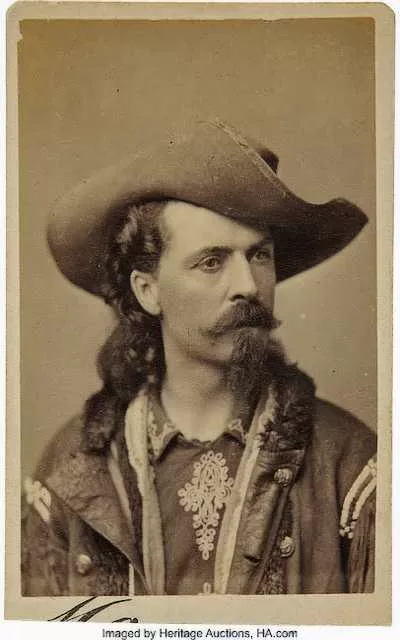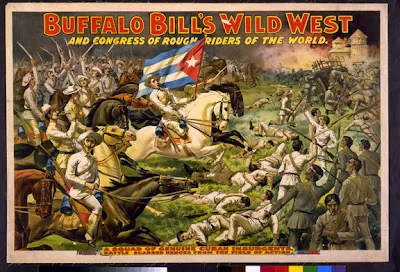In the Heart of the Wild West: Buffalo Bill Cody’s Remarkable Journey
The year 1846 marked the birth of a legend in Iowa – William F. “Buffalo Bill” Cody. A name synonymous with the rugged tales of the Wild West, Buffalo Bill’s extraordinary life unfolded against the backdrop of frontier adventures, military service, and the creation of a spectacle that would etch his name into history.
At the tender age of 14, Buffalo Bill, then known simply as William Cody, embarked on an adventurous stint with the Pony Express, racing horses cross-country to deliver mail to far-flung settlements. This early exposure to the vast expanses of the American West laid the foundation for the epic chapters that would follow.

As the Civil War swept across the nation, young Cody assumed roles as a scout and soldier on the Union side, showcasing not only his courage but also his deep connection with the untamed landscapes of the West. His post-war years saw him continue his service as a scout for the U.S. Army, honing his skills and knowledge of the frontier.
Cody’s nickname “Buffalo Bill” wasn’t a mere moniker; it was earned through his prolific buffalo (American bison) hunting endeavors. However, his legacy transcends the hunt, as he ventured into the world of entertainment with the creation of the iconic Buffalo Bill’s Wild West Show in 1882.
This outdoor extravaganza, a spectacle that unfolded over three to four hours, brought together an ensemble of acts ranging from sharpshooter Annie Oakley and historical reenactments to daring races, roping demonstrations, and the untamed riding of “broncos” – unbroken horses. The show aimed not only to entertain but also to educate, providing audiences with a hyper-adventurous glimpse into the Old West.
Buffalo Bill’s cast was massive, featuring hundreds of performers and live animals, including buffalo, elk, horses, deer, bears, cattle, and even a moose. The show played a pivotal role in glamorizing the rugged charm of the frontier, deeply embedding the spirit of the Old West into the collective consciousness of audiences who hadn’t experienced it firsthand.

The Wild West Show wasn’t confined to American soil. Buffalo Bill’s grand vision took the spectacle across the Atlantic to Europe, captivating audiences in England, France, Spain, Italy, Germany, Belgium, and the Netherlands. The grandeur of the show was exemplified during its voyage to Europe for Queen Victoria’s Golden Jubilee in 1887, requiring several ships to transport performers, animals, and equipment.
In 1893, the show dazzled crowds at the Chicago World’s Fair, drawing a staggering 18,000 spectators. Buffalo Bill Cody’s Wild West Show became a global phenomenon, a cultural export that influenced Westerns in TV and movies, modern rodeos, and even the traditions of modern circuses.
Despite financial challenges that led to bankruptcy and the closure of the show in 1913, the legacy of Buffalo Bill endured. In a remarkable turn of events, rodeo trick rider Montie Montana, Jr., revived the iconic Wild West Show in 1971. Montana’s audacious productions, spanning 26 countries on five continents, breathed new life into Buffalo Bill’s legacy. Montana held over 2,500 performances, becoming the sole person licensed to use the name “Buffalo Bill’s Wild West.”
Montie Montana’s dedication to preserving the spirit of the Wild West extended beyond the stage. His appearances in the Rose Parade on New Year’s Day for more than 60 years showcased his enduring commitment to keeping the legend of Buffalo Bill Cody alive.
As we reflect on Buffalo Bill’s extraordinary journey, from Pony Express rider to Wild West showman, we recognize a pioneer whose legacy transcends time. Buffalo Bill’s impact on American culture and the global fascination with the untamed West endures, leaving an indelible mark on the pages of history.

